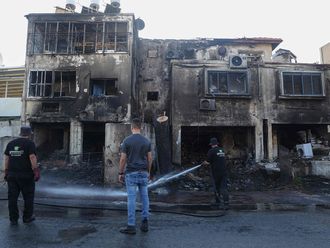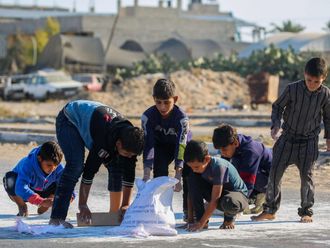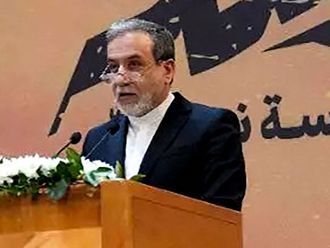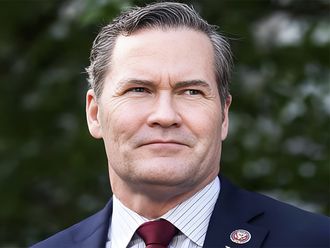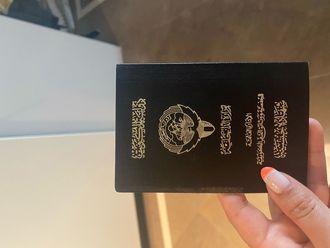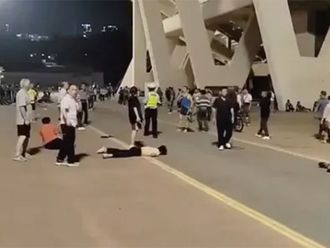Amman: Syrian government forces fired rockets into southern Damascus on Monday in what opposition activists called an indiscriminate bombardment to stop rebels opposed to President Bashar Al Assad advancing from the working class suburbs to the city centre.
The activists said it was the heaviest bombardment in 40 days of air strikes and artillery shelling aimed at blunting the gains by rebels operating from the Sunni Muslim neighbourhoods on the edge of the capital.
“Fighter jets hit what looked like specific rebel targets yesterday. Today the multiple rockets launchers are just making huge, random destruction,” said Rami Al Syed of the Syrian Media Centre, an opposition activists’ organisation monitoring Al Assad’s crackdown on the 20-month revolt.
Opposition activists said rockets and bombs hit Hajar Al Aswad, Al Tadamun, and Al Qadam, from where the population has largely fled after the areas fell under the control of the rebel Free Syrian Army. There were no immediate reports of casualties.
Rebels also said that Al Assad has begun pulling back some troops from the provinces to protect the capital.
Many thousands have died in the conflict which is increasingly developing into a civil war between Al Assad’s minority Alawite sect, an offshoot of the Shiite sect, and the country’s Sunni majority.
Speaking by phone from Damascus, Syed said the bombardment aimed to prevent rebels who have been building up their forces on the southern fringes of Damascus from advancing into the capital.
The bombardment also protects an army base on the edge of Hajar Al Aswad which is normally home to thousands of poor refugees from the Israeli-occupied Golan Heights who were at the forefront of the protest movement against Al Assad’s autocratic rule at the beginning of the revolt, Syed said.
After months of slow progress marked by poor organisation and supply, rebels have overrun several army positions in outlying regions in the last week, including a Special Forces base near the northern city of Aleppo and a small military airport in the east, on the border with Iraq.
In Damascus, they have intensified guerrilla attacks on Al Assad’s forces, targeting a roadblock on Sunday on the edge of a hilltop Damascus district inhabited mostly by Al Assad’s Alawite sect which has dominated power in Syria since the 1960s.
Rebel sources said Al Assad pulled an armoured column and 3,000 troops from the southern province of Daraa last week. In the east, Shaikh Nawaf Al Bashir, a tribal leader opposed to Al Assad, said a small elite Republican Guard unit also pulled out from the province of Deir Al Zor to Damascus.
“It seems the regime is realising that keeping control of the provinces is a lost cause, and that it has to concentrate on preventing its fall in Damascus,” Bashir said, pointing to the recent defections of dozens of officers based in the provinces.
But rebels, who are still operating largely separately in small groups despite efforts to bring them under unified regional command, have not captured a major city since the uprising began.
“We are seeing the death of the regime by a thousand cuts,” said a Western diplomat following the military situation.
“The military balance is improving to the advantage of the rebels. It is not quite 50-50 yet, but when it becomes so, Assad’s loyalists will ask themselves more and more whether it is worth keeping defending him.”


